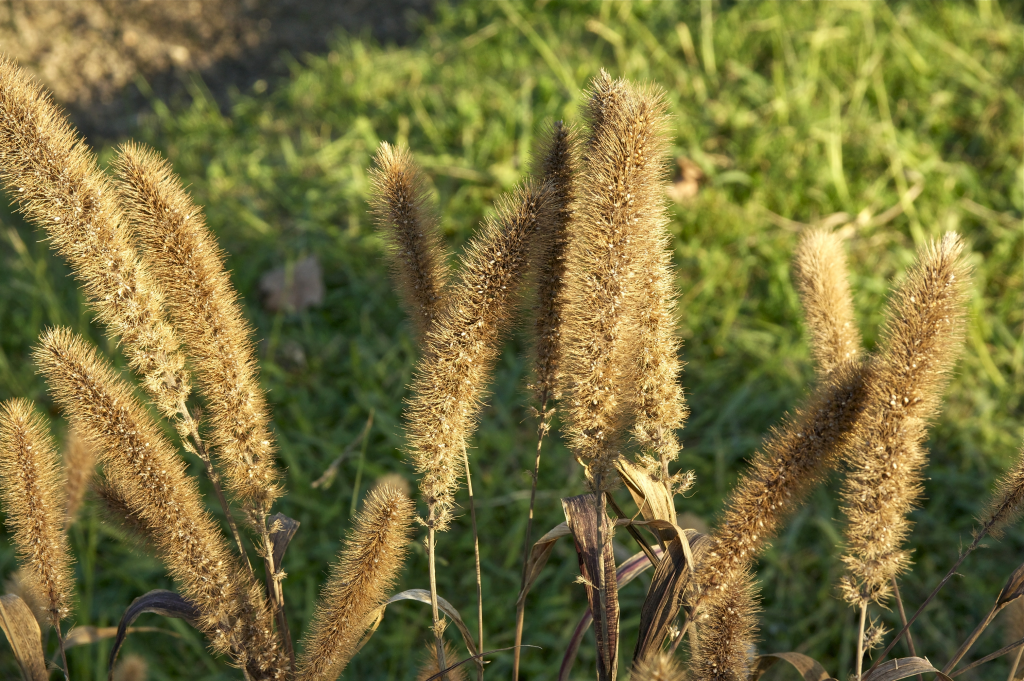
Also known as foxtail millet, this warm season annual grass is a member of the Poaceae family that also includes corn, rice and bamboo. It was first cultivated about 8,000 years ago in Cishan China and first appeared in central Europe in the second millennium BC. The ancient Roman naturalist, Pliny the Elder (died 79 AD), calls it a summer grain and says that bread is made from it. Carbonized plant material has been found in the soil of the Pompeii area dating to the eruption of Vesuvius in 79 AD. Photo Credit Daderot Wikipedia Commons

The plant grows 4-7′ tall and has slim, stems with narrow rough leaves. The panicles are 2-12″ long, dense, and hairy. The tiny seeds are round, flat and encased in a thin, papery hull. In modern times Italian millet is grown for grain, hay, and forage in Asia and Europe, and in Italy especially for bird feed.
Size: 2-12″ H
Light: Full sun
Soil: Average, medium moist, well-drained; tolerates drought and poor soil but not cold or water logged conditions
USDA Hardiness Zones: NA (annual)
Photo Credit Jebulon Wikipedia Commons